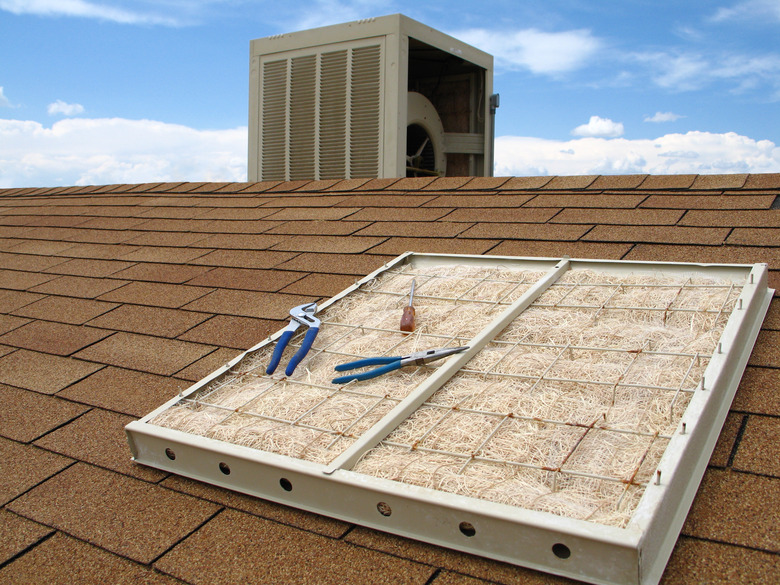How To Troubleshoot Swamp Cooler Problems
Swamp coolers are a great way to stay cool without spending a fortune on an air conditioner. Also known as evaporative coolers, they work by releasing evaporated water into the air, bringing the overall temperature down as much as 20 degrees Fahrenheit. Doing routine swamp cooler maintenance helps keep your unit working, but sometimes it still might have issues. If your swamp cooler has low airflow, is dripping, not turning on or otherwise not working, you'll need to do a little swamp cooler troubleshooting to figure out the problem.
Swamp Cooler Low Air Flow
Swamp Cooler Low Air Flow
This is one of the most common problems in swamp coolers. If there isn't enough air coming from the unit, make sure there's enough exhaust for the cooler. If you don't have exhaust ducts, you must have your windows or doors open to allow for proper airflow. Every 1,000 cubic feet per minute (CFM) of air supplied requires 2 square feet of exhaust openings.
Not Cooling Enough
Not Cooling Enough
If you notice the device has enough airflow, but it's not cooling you down, make sure the water system is working right. Be sure you have enough water in the unit, that the water pump is working and that the distributor isn't clogged. When you install a water line, it should keep the unit filled without manual filling, but there can be issues with proper filling.
Because evaporative coolers work by letting water into the air, the problem may simply be that you are in an area with too much humidity. These coolers work best in dry areas. They cannot distribute water to the air if there is already too much water in it. If you already have over 50 percent humidity in the air, you might want to try again on a drier day or use a portable air conditioner instead.
Evaporative Cooler Dripping
Evaporative Cooler Dripping
Usually, water dripping from a swamp cooler is a result of improper storage. When you store a swamp cooler during the winter, always remove the swamp cooler pads, drain the unit, clean the tank and use a swamp cooler cover until you bring it out for use again.
Sometimes, units use too much water and can even overflow due to an improperly adjusted float valve. You can manually adjust the rod to make sure the device gets enough water without overflowing in order to see if this solves the problem.
If the problem isn't related to poor storage practices or a problem with the float valve, or if you find your swamp cooler is blowing water, contact a professional.
Unit Won't Turn On
Unit Won't Turn On
First, check your fuse box or circuit breaker as the unit could have overloaded the circuit and caused a fuse to blow. Replace the fuse or reset the breaker to see if your cooler turns back on. Also, check the breaker inside the unit, if you have one, and reset it if it has been tripped.
If the problem wasn't a fuse or breaker, then see if your thermostat is set too high. Check to see if the timer was set for the future if your unit offers either of these features.
If the thermostat or timer wasn't the problem, you may use a voltmeter to see if your switch is operating properly. After that, try unplugging the unit and check the motor and wiring. The belt should be properly adjusted and the blower shouldn't be too hot. You can adjust the belt if it has slipped, or let the blower cool down and try again later if it's too hot. If you notice a problem with the switch, motor or wiring unrelated to the belt having slipped or the blower being too hot, you should seek the assistance of a professional repairman or electrician.
Emitting Musty Odors
Emitting Musty Odors
Stagnant water in the cooler and mildew on the pads can result in musty odors. You should regularly check your pads and replace them as necessary. If the water in the sump is stagnant, drain it and clean it. When adding new water, add a teaspoon of vinegar to help keep the water clean longer and consider installing a bleed off kit if this happens regularly. A bleed-off kit will remove some of the water and replace it with fresh water automatically.
